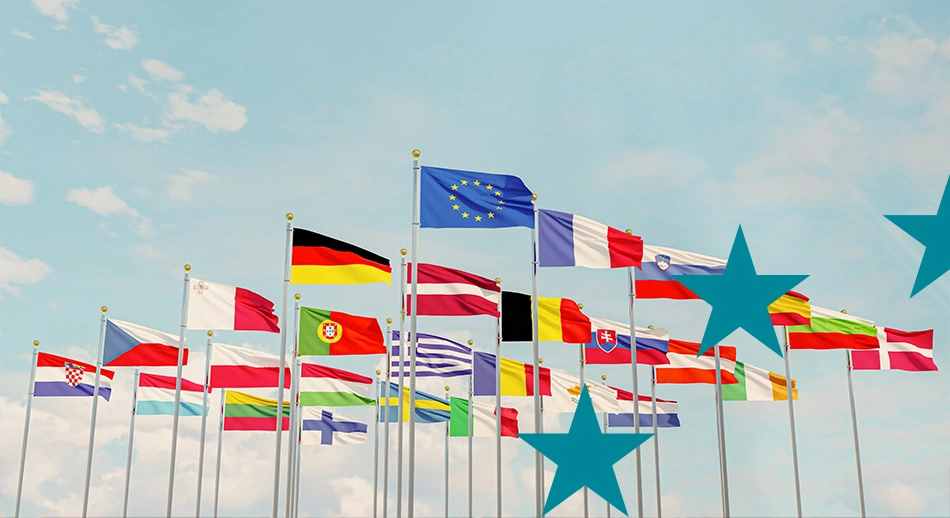The international political news in recent weeks is particularly eventful and has accustomed us to anxiously following, in Italy and around the world, the destabilizing effects of the pandemic. It has led us to animatedly discuss the U.S. elections: this year’s will not be the only ones, in their strangeness; nor will the U.S. elections be the only ones closely followed by the international media. It reopened the door to troubling conflicts raging in other areas of the world.
In this abundance of information we may have missed something of the lively debate going on among the European institutions (and between them and the member states) about the new financial framework. A debate that closely involves the future of the European Union and our country’s post-Covid recovery.
Let’s find out together what happened.
1. The first news we bring you, which is widely taken up by the EU institutions(Commission, Parliament andCouncil) is undoubtedly positive.
On November 10, a very important agreement was reached on the new long-term EU budget (2021-2027) and the Recovery Instrument or Next Generation EU.
Indeed, the Presidency of the Council of the European Union (under German leadership until the end of the year) has found common ground with negotiators from the European Parliament: as you may recall, the open knots concerned in particular theincrease in the budget for European programs and the establishment of a binding timetable for theintroduction of new own resources available to the EU institutions.
The agreement is of particular interest to those involved in europlanning, as it provides an increase in the budget available for community programs by as much as 15 billion euros. This results in the following arrangement:
| Horizon Europe | +4 bn € – tot. 79.9 bn € |
| Erasmus+ | +2.2 bn € – tot. 23.4 bn €) |
| Health | +3.4 bn € – tot. 5.07 bn € |
| Rights and values | +0.8 bn € – tot. 1.6 bn € |
| Creative Europe | +0.6 bn € – tot. 2.2 bn € |
| InvestEU | +1 bn € – tot. 3.8 bn € |
| Neighborhood and Cooperation | +1 bn € – tot. 71.8 bn € |
| Humanitarian aid | +0.5 bn € – tot. 10.26 bn € |
| Frontiers | +1 bn € – tot. 6.5 bn € |
| Frontex | +0.5 bn € – tot. 5.6 bn € |
In addition, the agreement provides:
- greater flexibility in the management of the EU budget, which will undergo a review by Jan. 1, 2024, and will be supplemented by the use of specific “matching” funds dedicated to the labor market (€0.186 bn annually), emergency aid (€1.2 bn annually), Brexit (€5 bn total), margin management and operational flexibility (€0.915 bn annually);
- a strong commitment to combating climate change (to which 30 percent of the 2021-2027 budget and Next Generation EU will be dedicated) and a set of rules to ensure better use of EU funds (constraint of respect for the rule of law in the use of EU funds; improvement of the system of information and monitoring of the use of funds and beneficiaries; strengthening of the European Public Prosecutor’s Office and anti-fraud services).
Last (but not least), the agreement sets out the “roadmap” (much desired by the European Parliament) for theintroduction of new own resources. By June 2021, the Commission will submit a proposal on:
- A “carbon tax” imposed at Europe’s external borders (useful to combat climate change and “environmental dumping”);
- A “digital tax” (useful to ensure fair taxation on the digital economy);
- A system based on the purchase of CO2 emission allowances within the EU.
The intent is to make these new resources operational from January 2023. Other additional new own resources (financial transaction tax, European corporate tax, or other) will be the subject of new Commission proposals by June 2024.
This is an important milestone because the existence of larger own resources, independent of member states’ contributions, makes the formulation of an annual and multi-year EU budget more autonomous, sustainable and predictable.
However, for those involved in EU projects and funding, it is particularly important what this agreement represents in the immediate term: that is, a decisive step toward the approval of the new financial framework and the new “ecosystem” of directly and indirectly managed EU programs, projects and funding calls.
2. In this regard, we bring you a second piece of news that is, from every point of view, much less positive: this painstakingly reached agreement may be undermined by the veto of some countries.
How is this possible? To understand better, let’s take a few steps back.
As we know, reaching an agreement (such as the one reached on November 10 by the representatives of the Council Presidency and the Parliament) must result in formal approval by the two institutions on several aspects: the available resources, the Multiannual Financial Framework proper, and the Regulations for the various European Programs.
The own resources decision will have within it the “revolution” represented by the Recovery Instrument, i.e., the possibility for the Commission to borrow (“Recovery Bonds”) and will need formal ratification by all member states.
Now, as explained in early October, there is no unanimous consensus among European countries on the conditions for using the Recovery Instrument and European funds in general. In contrast, the Council’s vote on these conditions of use had been particularly troubled: as many as nine countries had opposed it, raising doubts about the tightness of the agreement, for which unanimity would have been required.
The perplexity of the so-called “thrifty” countries (i.e., more rigid in defining the conditions of a “European debt”) was compounded by strong resistance from Poland and Hungary. The two countries are the subject of infringement procedures concerning the rule of law and human rights: founding values of the Union, respect for which is (according to the new rules) one of the conditions for receiving European funds.
The two countries have vetoed both the European budget for the new seven-year period and the Recovery Instrument, creating an impasse in which the entire process may be stalled indefinitely. So unfortunately, at the time of greatest need, the road to the new programming period and to the Recovery Instrument again becomes uphill.
3. What conclusions can be drawn from these conflicting reports?
Certainly, these reports indicate that the path of the new community budget is by no means a foregone conclusion, but is proceeding (and perhaps will still proceed) with ups and downs. Obstacles will arise not only at the community level, but also at the time of necessary ratification by member states.
However, a first positive aspect (especially for those involved in Europlanning) is that the architecture of EU funds, programs and their financial allocations is beginning to emerge quite clearly, with joint consensus from the highest institutions of the Union: disagreements concern, at least for now, a very general (albeit very important) issue of the architecture of the new programming. An issue that could result in limited operational impact on our future projects: provided an agreement is found to break the impasse.
A second positive aspect concerns the urgency of an agreement for all European countries: no one has an interest in procrastinating the availability of funds, primarily Poland and Hungary, which are among the main beneficiaries. This is both with regard to European programs and the Recovery Instrument, whose first guidelines have already been defined at the Italian level.
So let’s wish for a quick solution and keep updated with the Guide!




